Introduction
Global trade has always been the backbone of modern economies, connecting markets, industries, and consumers across continents. Yet, as this interconnected system grows, so does its environmental footprint. Freight transportation, warehousing, and packaging — the very elements that make global commerce possible, are now under intense scrutiny for their carbon emissions, waste generation, and energy consumption.
The world is entering a new era where sustainability is no longer a side initiative but a strategic business imperative. Consumers are demanding transparency, regulators are setting stricter emission standards, and investors increasingly prioritize companies that integrate sustainability into their core operations. The logistics sector, once measured solely by speed, cost, and reliability, is now being evaluated for its environmental responsibility.
This shift has given rise to “green logistics”, a model that aims to minimize environmental impact across the entire supply chain while maintaining operational excellence. From electric fleets to eco-friendly packaging and renewable-powered warehouses, green logistics is redefining how global trade operates, making it smarter, cleaner, and more future-ready.
1. From Efficiency to Responsibility: The Evolution of Modern Logistics
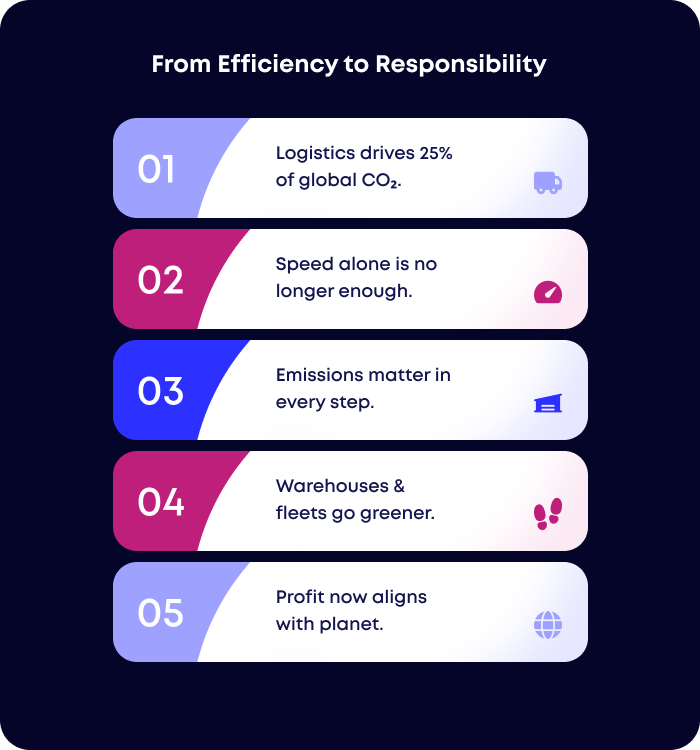
For decades, logistics optimization meant one thing, efficiency. Companies competed to move goods faster, cheaper, and farther. However, this relentless pursuit of performance came with hidden costs. Every truck idling in traffic, every air shipment flown across borders, and every warehouse running on fossil fuels contributed to a growing environmental burden.
Today, those hidden costs are impossible to ignore. Logistics and transportation account for nearly 25% of total global CO₂ emissions, with freight movement being a major contributor. The industry, long seen as a driver of globalization, is now at the center of the sustainability conversation.
Modern logistics is evolving from efficiency-focused to responsibility-driven. This means organizations are no longer optimizing only for time and money, but also for environmental and social impact.
Key changes shaping this evolution:
- Carbon-conscious decision-making: Companies now calculate emissions per shipment or per ton-kilometer before finalizing routes or transport modes.
- Eco-design in operations: Sustainability is being integrated from warehouse construction to packaging choices.
- Holistic performance metrics: KPIs are expanding to include energy intensity, waste reduction, and emissions tracking alongside cost and delivery speed.
The future of logistics belongs to companies that balance profit with purpose, using technology and innovation to ensure that growth doesn’t come at the planet’s expense.
2. The Rise of Eco-Friendly Transportation
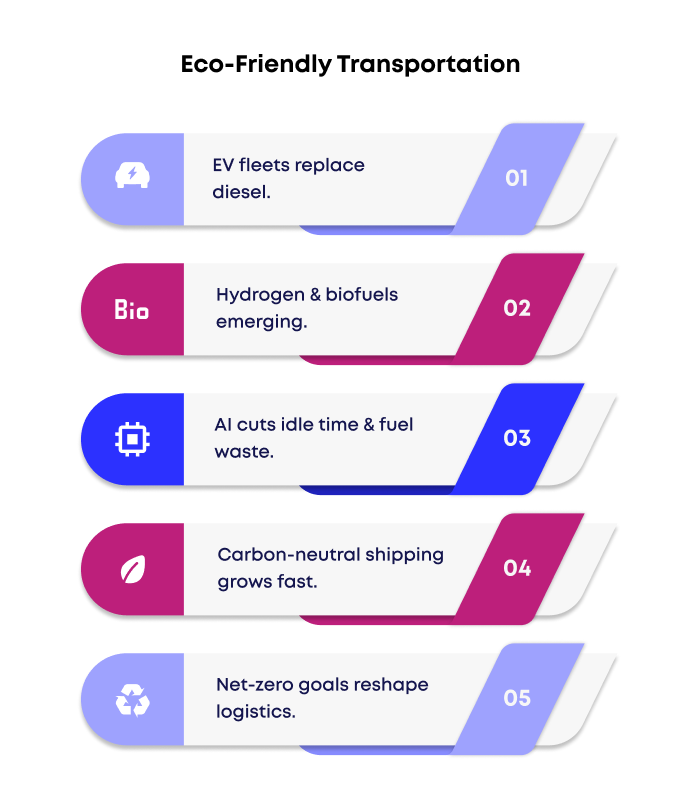
Transportation is the lifeblood of global trade, but it’s also one of the largest emitters of greenhouse gases. From container ships to last-mile delivery vans, logistics networks depend heavily on fossil fuels. Transitioning this vast ecosystem to cleaner, more efficient alternatives is one of the biggest sustainability challenges, and opportunities, of our time.
a. Electrification and Alternative Fuels
One of the most visible shifts is the electrification of fleets. Logistics leaders are replacing diesel trucks with electric and hybrid vehicles to cut emissions and reduce dependency on non-renewable fuels. In urban areas, electric delivery vans and cargo bikes are already common sights, significantly reducing noise and air pollution.
For long-haul operations, companies are exploring alternative fuels such as biofuels, hydrogen, and liquefied natural gas (LNG). While still in early stages, these innovations have the potential to revolutionize freight movement, particularly in maritime and aviation sectors.
b. Smarter Route Optimization
Beyond fuel choice, logistics providers are turning to AI-driven route optimization to lower emissions. Intelligent algorithms analyze weather, traffic, and delivery data in real time to determine the most efficient routes, minimizing fuel use and idle time. For large-scale operations, even a small reduction in distance traveled can translate to substantial carbon savings.
c. The Shift Toward Carbon-Neutral Shipping
Carbon offsetting has become another powerful tool in the green logistics arsenal. Many global carriers now offer carbon-neutral shipping programs, where emissions from transportation are compensated through verified sustainability projects like reforestation or renewable energy investments.
Industry Insight:
Major logistics players such as Maersk, DHL, and UPS have publicly committed to reaching net-zero emissions by 2050, setting a precedent for the entire supply chain ecosystem.
Together, these transformations are redefining transportation, not just as a means to deliver goods, but as a mechanism to deliver positive environmental impact.
3. Sustainable Warehousing: The New Green Hubs

Warehouses form the physical backbone of global logistics, massive, energy-intensive structures operating 24/7. As supply chains expand, the environmental impact of these facilities has come under close examination. The good news: warehousing is getting greener, smarter, and more energy-efficient than ever before.
a. Energy-Efficient Design and Operation
Modern fulfilment centers are being built with eco-conscious design principles, incorporating skylights for natural illumination, solar panels for renewable energy, and motion sensors that reduce unnecessary electricity use. HVAC systems are now optimized through AI-driven temperature regulation, ensuring climate control with minimal energy consumption.
b. Renewable Energy Adoption
Many large logistics operators are investing in on-site renewable power generation. Solar rooftops and wind-powered microgrids allow warehouses to run partially or entirely on clean energy, drastically lowering operational emissions.
c. Material Efficiency and Waste Management
Sustainability in warehousing also extends to materials and waste. Green warehouses use recycled construction materials and implement circular waste systems, ensuring packaging, pallets, and containers are reused or recycled wherever possible.
Example in Action:
Filuet’s regional fulfilment hubs are strategically designed to optimize both energy efficiency and inventory precision. By integrating renewable energy sources and digital warehouse management systems, Filuet minimizes waste while maintaining speed and transparency across global markets.
In essence, the modern warehouse isn’t just a storage space, it’s a sustainability engine, driving measurable environmental improvements across the supply chain.
4. Packaging Innovation: Reducing Waste from the Inside Out
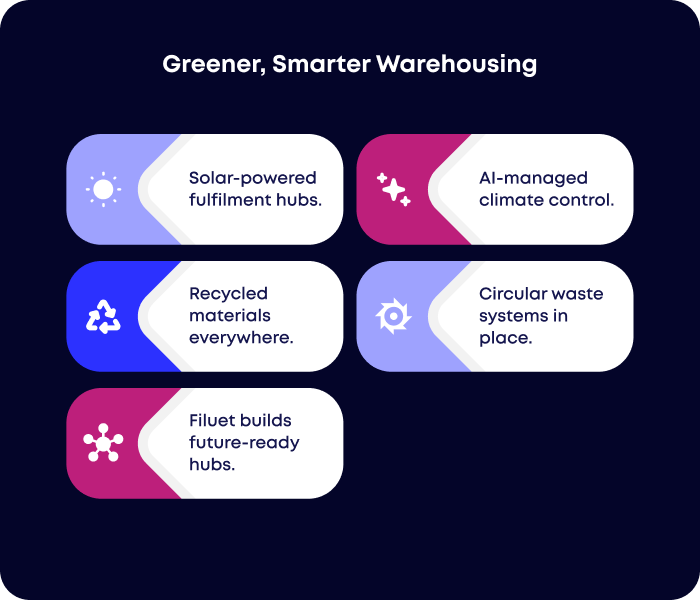
Packaging has long been a double-edged sword in logistics. It protects goods in transit, yet often ends up as waste once deliveries are complete. With e-commerce volumes surging, packaging waste has become one of the industry’s most visible sustainability challenges.
a. Smarter Materials
The push for eco-friendly materials is at the heart of packaging innovation. Companies are replacing plastic with biodegradable, recyclable, or compostable alternatives made from corn starch, sugarcane fiber, and recycled paper.
b. Reusable and Returnable Packaging
Some brands are introducing returnable packaging models, where customers can send empty containers back for reuse. This circular approach not only reduces waste but also creates a tangible sustainability story customers can engage with.
c. Intelligent Packaging Design
AI and machine learning are helping companies right-size their packaging, using just enough material to ensure product safety. Over time, these small optimizations lead to significant waste and cost reduction.
Takeaway:
By treating packaging as a design challenge, not a necessity, brands can achieve the dual goals of sustainability and efficiency, while signaling their environmental commitment to customers.
5. Technology: The Digital Backbone of Green Logistics
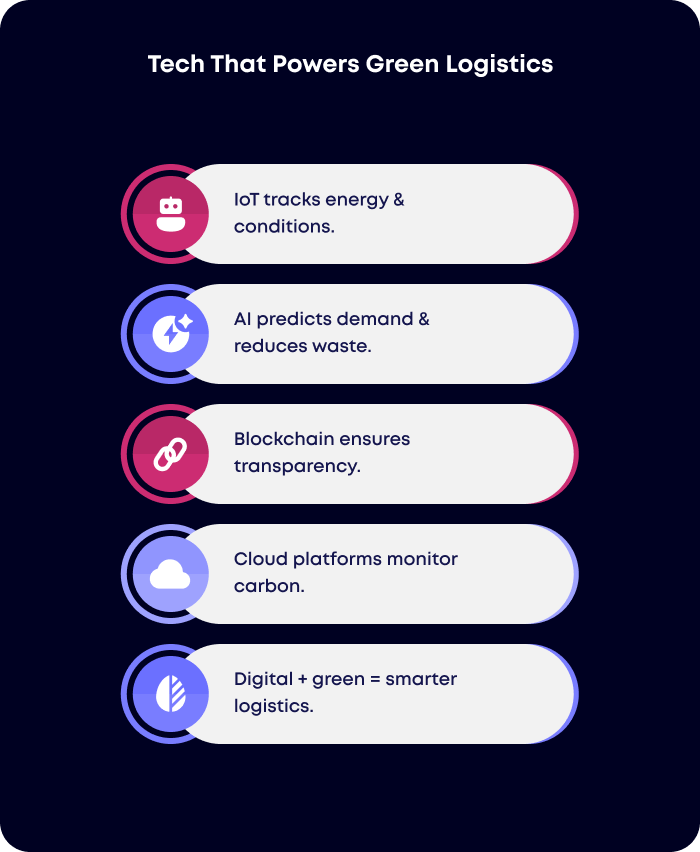
Sustainability today is driven by data. Without precise measurement, there can be no meaningful improvement. That’s where technology comes in, providing the tools to monitor, analyze, and optimize logistics operations in real time.
a. Internet of Things (IoT)
IoT-enabled sensors are transforming visibility across the supply chain. From monitoring temperature and humidity to tracking energy consumption, these devices help companies understand and manage their environmental footprint with unprecedented accuracy.
b. Artificial Intelligence (AI) and Predictive Analytics
AI models analyze massive datasets to forecast demand, identify inefficiencies, and recommend greener alternatives, such as consolidating shipments or rerouting deliveries. Predictive analytics also reduces overproduction and inventory waste, a major source of hidden emissions.
c. Blockchain and Transparency
Blockchain provides verifiable transparency in sustainability reporting. Every stage of the supply chain, from sourcing to delivery, can be tracked, ensuring authenticity in sustainability claims.
d. Cloud-Based Sustainability Platforms
Modern logistics systems integrate all this data into centralized cloud dashboards, where organizations can monitor carbon metrics, waste performance, and renewable energy usage in one place.
6. Circular Supply Chains: Closing the Loop

The traditional supply chain is linear: produce, distribute, consume, dispose. But in a world facing resource scarcity and climate pressure, this model is no longer viable. The future lies in circular supply chains, where materials, products, and packaging flow continuously through cycles of reuse, repair, and recycling.
a. The Rise of Reverse Logistics
Reverse logistics, managing returns, refurbishments, and recycling — is a cornerstone of circularity. Instead of discarding used or returned items, companies are reintroducing them into circulation, extending their lifespan and reducing waste.
b. Partnerships and Collaboration
Circularity requires collaboration across the supply chain ecosystem. Manufacturers, logistics providers, and recyclers must work together to recover materials, share data, and streamline collection systems.
c. Data as the Enabler
Digital tools enable precise tracking of a product’s life cycle, making it easier to measure impact and identify opportunities for reuse or remanufacturing.
Example:
Leading fashion and electronics brands are now implementing take-back programs, where logistics partners collect and process used goods for resale, refurbishment, or recycling. This not only reduces waste but also creates new revenue streams and strengthens customer loyalty.
Circular logistics isn’t just sustainable, it’s smart economics. By designing systems that “close the loop,” companies can reduce costs, conserve resources, and future-proof their business models.
7. Filuet’s Commitment to Sustainable Global Logistics
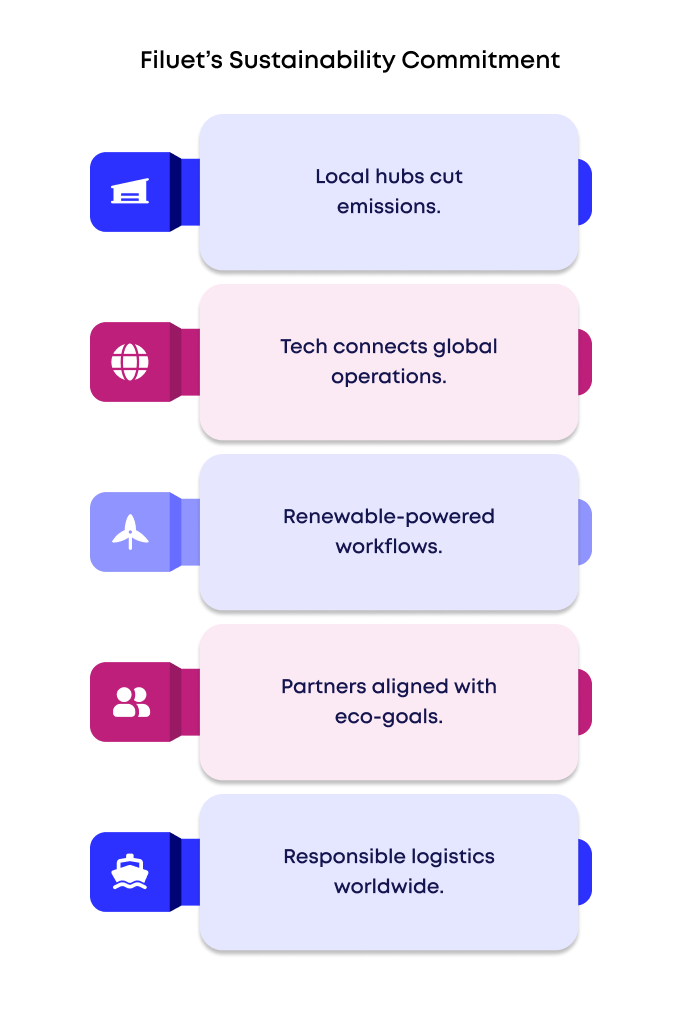
At Filuet, sustainability is not an afterthought, it’s embedded in the way we design, manage, and optimize global logistics. Our mission is to help brands achieve seamless global operations while aligning with their environmental and social responsibility goals.
Our Approach Includes:
- Regional Warehousing: Establishing local hubs reduces transport distances, fuel use, and emissions — while improving delivery speed.
- Technology Integration: Filuet’s systems connect with clients’ e-commerce and ERP platforms to ensure full visibility and efficiency across operations.
- Renewable Energy and Resource Efficiency: We continuously adopt renewable energy sources and optimize warehouse systems to minimize waste.
- Sustainable Partnerships: We collaborate with packaging, recycling, and transport partners who share our commitment to sustainability.
- Global Experience: With decades of cross-border expertise, Filuet manages complex logistics networks responsibly, ensuring consistency in sustainability standards worldwide.
🌍 Result:
A greener, faster, and more transparent logistics experience, where operational excellence and environmental responsibility go hand in hand.
Conclusion: Sustainability as the Future of Global Trade
The logistics industry stands at a defining crossroads. The path forward is clear: the future belongs to businesses that act responsibly, innovate sustainably, and operate transparently.
Green logistics is no longer a cost center or a corporate initiative, it’s a strategic advantage. Companies that reduce emissions, optimize resources, and communicate their sustainability commitments will win customer trust, meet regulatory expectations, and gain a competitive edge in global markets.
With partners like Filuet, brands can transform sustainability from an obligation into an opportunity, integrating eco-conscious practices into every step of their supply chain.
Because in the new world of global commerce, success won’t just be measured in speed or scale, it will be measured in sustainability.
.webp)
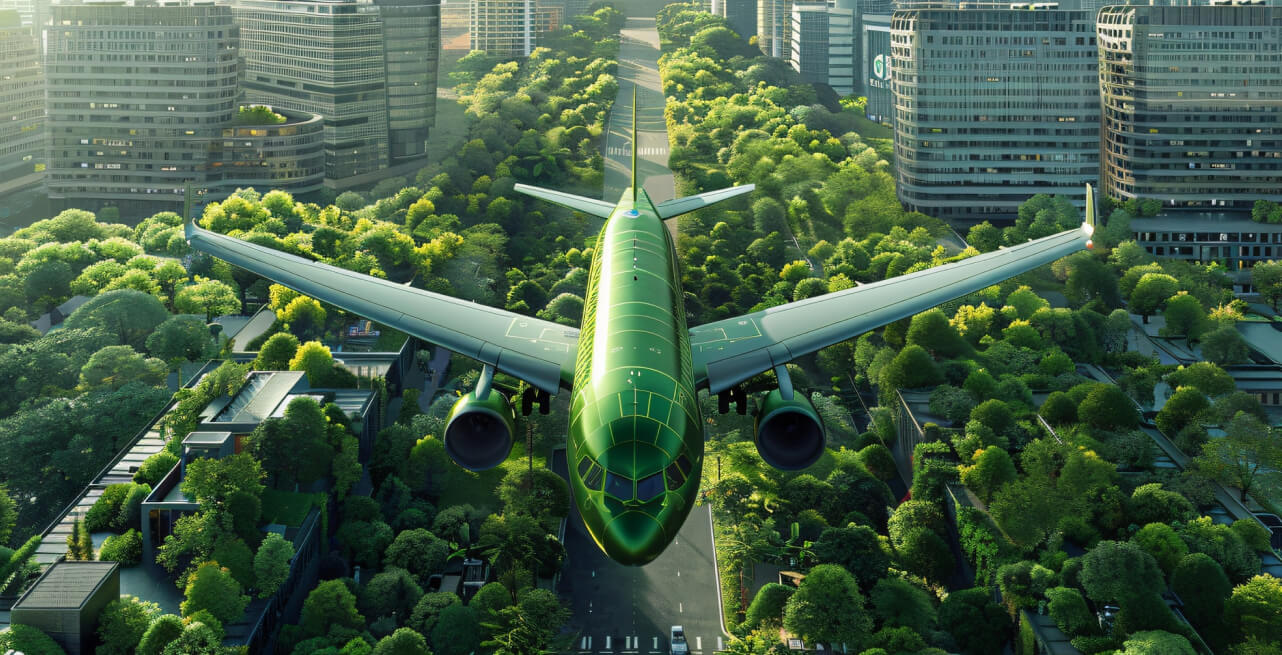
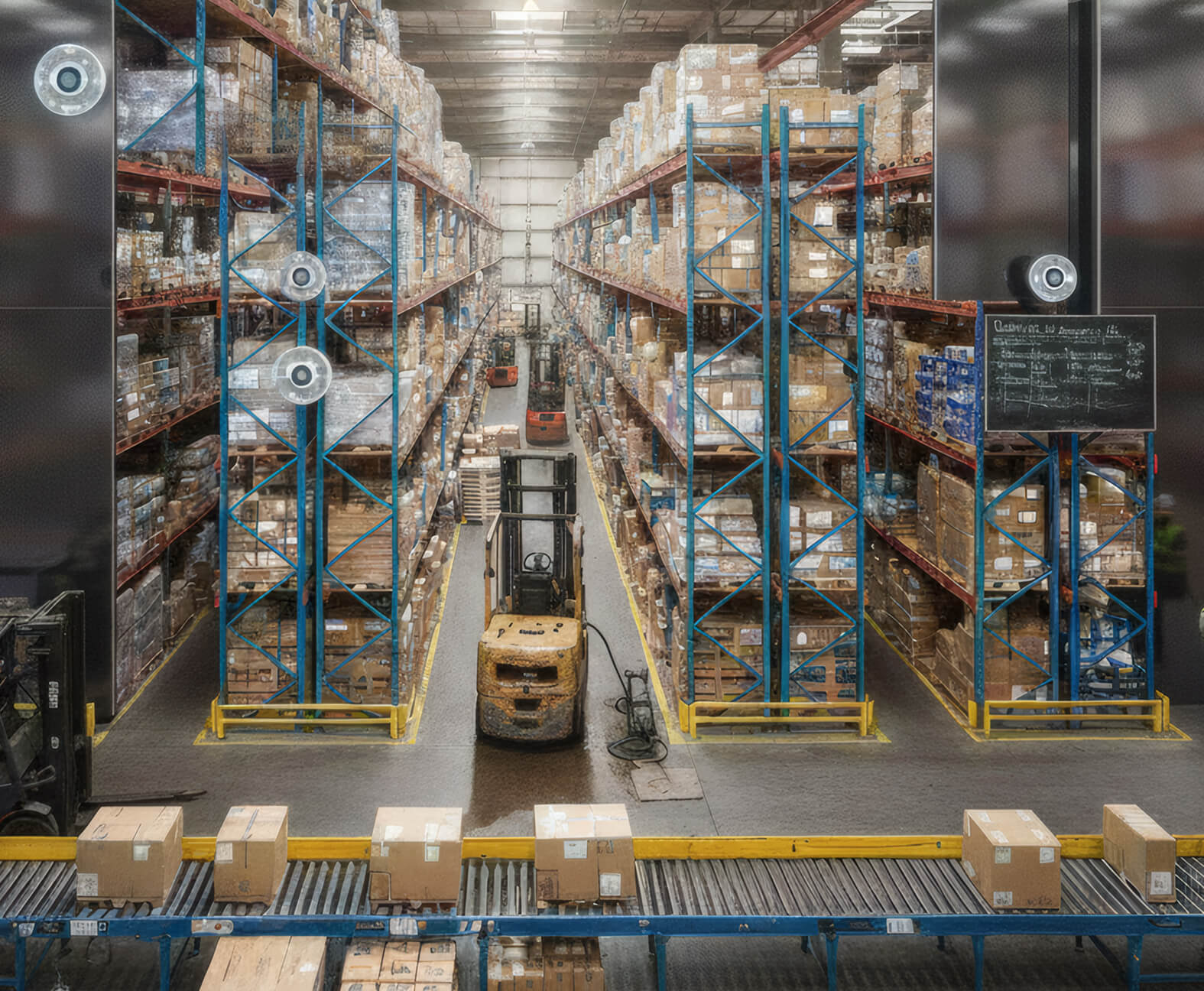
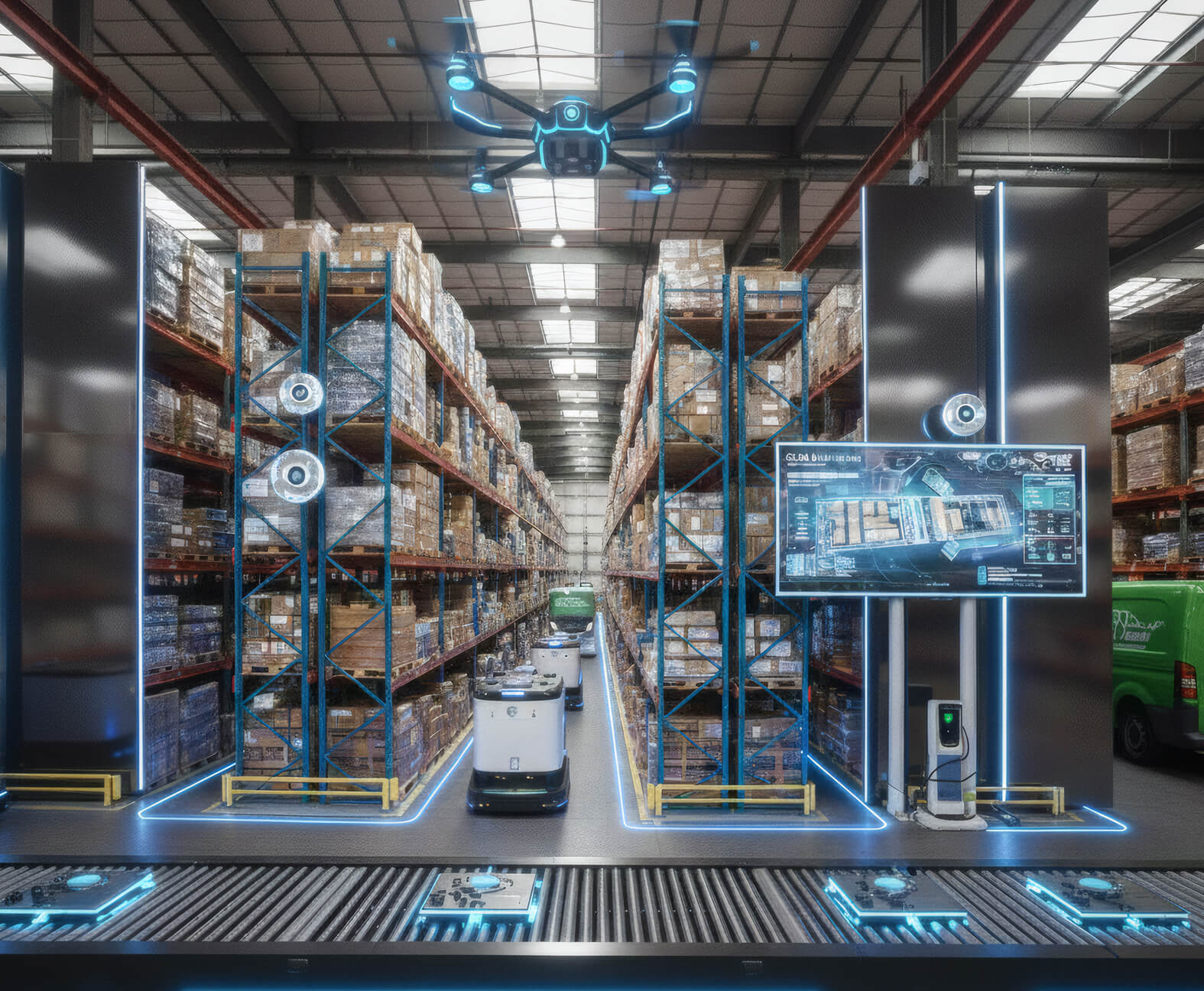

.webp)
.webp)










